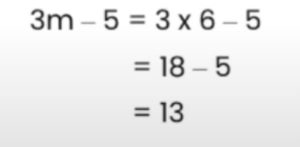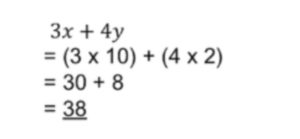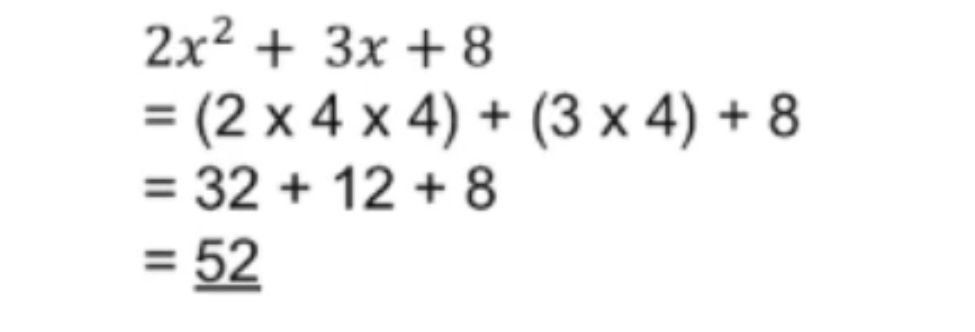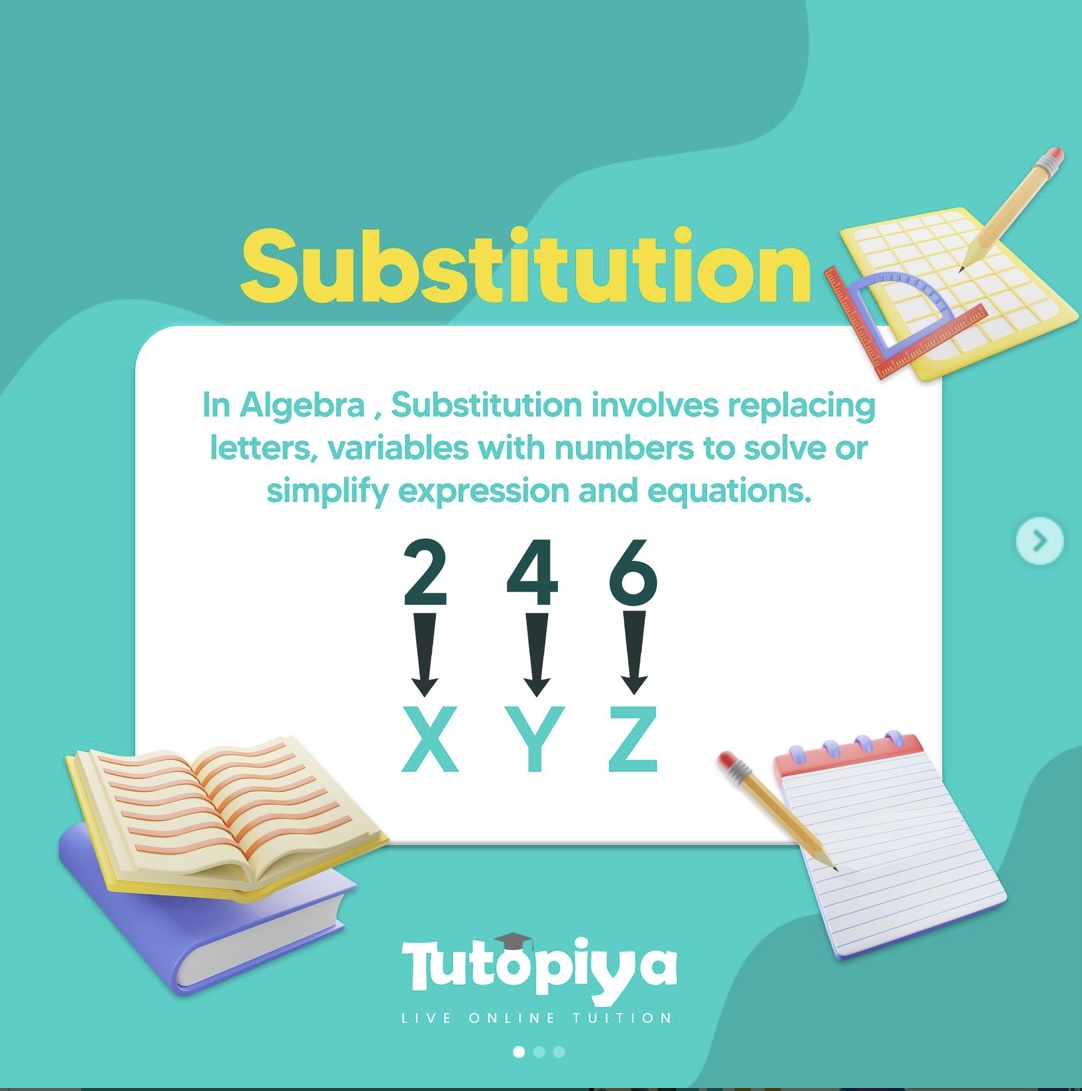[Please watch the video attached at the end of this blog for a visual explanation of this topic]
A sub-topic under Algebra that gets questioned often is the sub-topic of “Substitution” and that is exactly what we will be discussing in this article!
What exactly is substitution?
If we take the definition of the word “substitute”, it means to put one thing in the place of another, meaning you replace one thing with another thing.
In Mathematics, substitution is when you replace a letter with a number. This letter also gets referred to as a variable.
Example:
This is a very simple substitution question. Some examiners like to set questions like this, whereas some tend to stick to harder substitution questions. It does not hurt to try out all kinds of questions though, right?
Example 1:

So if you look at the example given here, we have 3 and – 5 as numbers, therefore m is the variable, or the letter that needs to be substituted. The letter could take any value usually, but in this question, we are given the value of m. So the only thing that is left to do is replace m with the number that is given to us, i.e. 6.

When the letter is substituted, since m is 6:
6 × 3 = 18
18 – 5 = 13
Hence the answer of the expression is 13 when m is 6.
Example 2:
Similarly, you can have some questions where sometimes you are to substitute two different variables/ letters.

In the example given below, x is one value as 10 and y is another value as 2.

Once these values are substituted in the place of x and y, the part of the expression 3x becomes 3 ×10 = 30, and 4y becomes 4 × 2 = 8. This results in the final answer being 38.
Example 3:
There is another type of question where you must sometimes square the term you are substituting.

In this example, x = 4, but since x is squared, when substituting, you must square the number first,as indices are solved before multiplication. Hence, when it says x^2 that means you must square the value of x.
Since x = 4, 4 must be squared. 42 is 16.
Therefore, 2 × 16 + 3 × 4 + 8 is the expression.
This simplifies into 32 + 12 + 8, which gives us 52 as the answer.

Be Careful!
Substitution does not mean that once you replace the variable/ letter with the number given, your job is done. You have to be very careful, not just about substituting the number, but also that you have substituted it correctly. Check whether the number you are supposed to substitute is a positive number or a negative number, whether the order of operations has been obeyed or not. All of those things need to be considered.
You can watch the video for another example which has fractions to be substituted too.
Substitution requires that you know your order of operations, so in case you have forgotten what BIDMAS stands for, access our article on it here and revise quickly.
What should you do next?
Substitution happens to be an area that is questioned in every single paper, and it is quite easy once you carefully substitute the values given and also pay attention to following the BIDMAS rules.
Mathematics questions are rarely repeated word for word, but they are most definitely given according to past patterns. Some questions can be found here as well, and you can time your answers to see if you can stick to the time limit given. Remember, timing is extremely important, especially when doing a Mathematics paper.
If you are struggling with IGCSE revision or the Mathematics subject in particular, you can reach out to us at Tutopiya to join revision sessions or find yourself the right tutor for you.
Watch the video below for a visual explanation of the lesson on substitution and make sure to attempt the quiz once you’re done!
